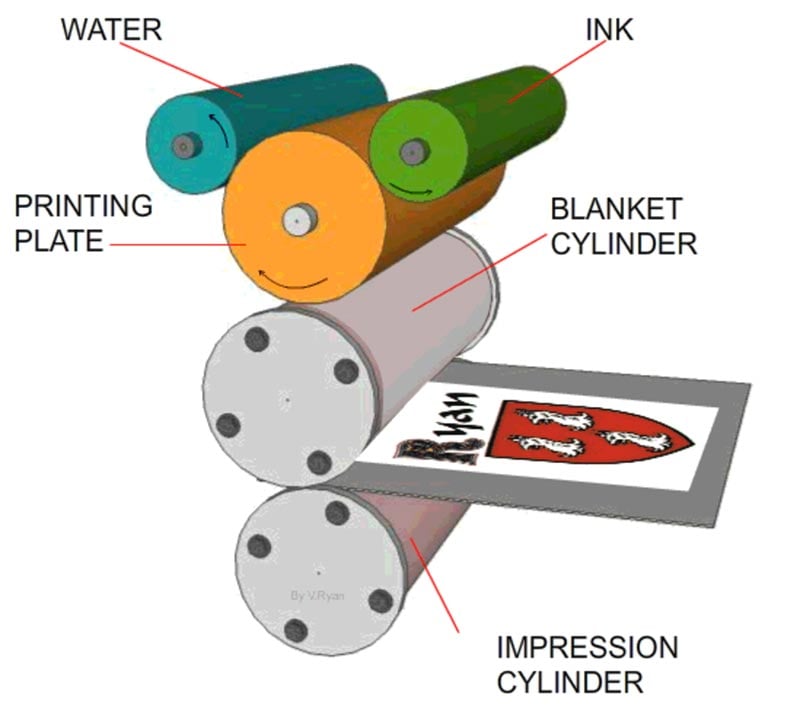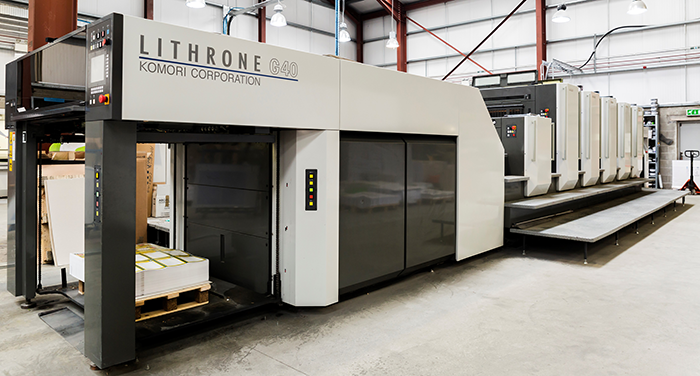A Comprehensive Guide to Recognizing Litho Printing Methods
The world of litho printing, a technique originating from the late 18th century, is an interesting mix of background, art, innovation and science. This extensive overview will unwind the intricacies of this printing technique, from the composition of litho inks to the obstacles dealt with in contemporary applications. As we venture right into the intricacies of lithography, the value of automation and sustainability in guaranteeing its future significance comes to be progressively clear. Stay with us as we trip right into the exciting world of litho printing.
The Historical Advancement of Litho Printing
The historic trajectory of litho printing, a critical technology in the realm of interaction, is an exciting story of human resourcefulness. Birthed in the late 18th century by Alois Senefelder, this technique was initially an affordable method of publishing theatrical works. Lithography, stemmed from the Greek words for 'rock' and 'to write', utilized a smooth stone surface to move images onto paper. The process developed with the advent of the rotating press, which substantially increased productivity (litho printing). In the 20th century, the advancement of balanced out lithography changed the sector, enabling automation of high-grade prints. Each phase of litho printing's advancement showcases humankind's ruthless quest of performance and high quality in aesthetic communication.
Decoding the Science Behind Litho Printing Inks
Relocating onward in the expedition of litho printing techniques, the focus now moves to the science behind litho printing inks. The composition of these inks, their drying out procedure, and color mixing methods form the foundation of this complicated art type. Recognizing these components is crucial to understanding the craft and attaining the desired print outcomes.
Composition of Litho Inks
In lithographic printing, the essential duty of litho inks can not be overstated. The structure of litho inks varies depending on its function, however normally, they consist of 2 major elements - lorries and pigments. Pigments, the color-providing aspects, are carefully ground bits put on hold in the car, a liquid that carries the pigment onto the printing surface area. The vehicle is a complex combination of oils, solvents, and materials, which affect the ink's drying time, adhesion, and gloss. Additionally, numerous additives are present to enhance particular residential properties like flow, drying, and resistance to ecological impacts. Each component plays an important component in the final print's top quality, making the accurate formulation of litho inks a detailed science.
Ink Drying Process
From the composition of litho inks, focus turns to the remarkable procedure of ink drying. 2 primary methods are used in litho printing: oxidative drying and absorption. Absorption, on the various other hand, involves the ink permeating into the paper fibers, which is a much faster process however can lead to less lively shades.
Color Combining Methods
While the drying procedure plays an essential duty in litho printing, the science of color blending strategies holds equal significance. The science behind litho printing inks likewise takes right into account the transparency of the ink, which impacts how colors overlay and mix.
The Art and Design Components in Litho Printing
Litho printing takes a breath life into art and design with its unique aspects. Litho printing accommodates a selection of colors, enabling musicians to create vibrant browse this site and dynamic prints. This mix of precision and adaptability makes litho printing a favored selection for several musicians and developers.
Modern Applications of Litho Printing Methods
Litho printing methods have located substantial use in the contemporary business sector. Its influence and importance proceed to expand with the development of brand-new developments and innovations in the area. This area will certainly check out these modern applications and the transformative function they play in the printing sector.
Industrial Litho Printing Makes Use Of
In today's electronic age, one may wonder regarding the importance of traditional printing techniques. Litho printing helpful hints continues to be an essential component of the business industry. High-volume printing tasks, such as the production of publications, newspapers, and product packaging, count on litho printing for its capability to supply premium picture quality and price efficiency. The process, which involves transferring a tattooed picture from a plate onto a rubber blanket and after that to the printing surface area, uses unmatched consistency. This makes it ideal for work needing a huge print run. Litho printing also supplies a wide color range, above that of digital printing. This makes it the go-to selection for tasks that demand lively, top quality color reproduction.
Innovations in Litho Printing
Pressing the limits of typical techniques, modern-day improvements have fueled a host of technologies in litho printing. One prominent growth is digital litho printing, which integrates the virtues of digital technology with litho's top quality output. These technologies underscore the long-lasting importance of litho printing in the contemporary world.
Discovering the Refine of Litho Printing: Action by Action

Difficulties and Solutions in Contemporary Litho Printing

In spite of the precision and custom that litho printing happily maintains, it is not without its collection of modern challenges. One of the most common concerns include the high preliminary setup expense, problem in printing variable information, and environmental concerns due to chemical usage. Services are arising as modern technology advances. Digital litho printing enables affordable brief runs and very easy customization, resolving the problem of variable information. Environmentally-friendly inks and more secure plate-making processes reduce environmental issues. Additionally, developments in automation have lowered labor expenses, even more equalizing the lithography procedure. Therefore, while there are challenges, the litho printing sector is proactively adapting to fulfill them head-on, guaranteeing its relevance in the future.
Final thought
In final thought, litho printing, with its rich background and clinical details, holds a substantial area in the print market. As the guide exposes, it's a synthesis of art and technology, with modern advancements guaranteeing its importance. Nevertheless, the industry faces obstacles that need innovative solutions, with a focus on automation and sustainability. The future of litho printing depends upon its capability to adapt to these changing needs, verifying its have a peek here enduring worth in an evolving market.
